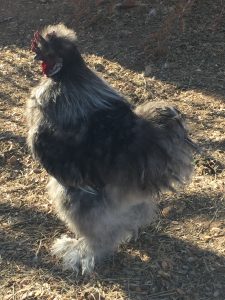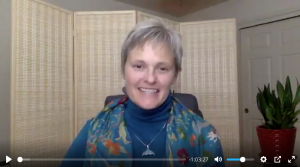[vc_row][vc_column][vc_column_text css=”.vc_custom_1511805284165{margin-bottom: 0px !important;}”] The Hawk’s Eye posts are an occasional sampling of what I’m reading, listening to, exploring, and learning…book and media reviews and recommendations and occasionally curated online content.
The Hawk’s Eye posts are an occasional sampling of what I’m reading, listening to, exploring, and learning…book and media reviews and recommendations and occasionally curated online content.
People are often surprised to hear that my chickens are frequent teachers in my animal communication classes. Our human-centric ideas and biases often lead people to wonder, “What could a chicken possibly have to teach?”
People are often surprised and amazed when they take the time to really listen to, understand, and communicate with chickens. My flock is a constant source of inspiration, fascination, and wisdom for me, and I love sharing them with other people. In Communicating with Chickens and Mr. Rosie Rooster I share some of the wonderful wisdom and teaching offered by my chicken family.

Pierre, Bantam Silkie Rooster
Many people who live with and love chickens understand the particular joys of observing and participating in chicken society, and the awareness, sensitivity, and intelligence of chickens both as individuals and as a species. It’s true–get “chicken people” together and the chicken talk can go on for hours. I’ve not owned a television for well over a decade, but “Chicken TV” is a popular activity in my household. 🙂
I’ve just picked up a wonderful new book by Melissa Caughey, How to Speak Chicken: Why Your Chickens Do What They Do & Say What They Say. It’s a beautiful manual of chicken language, society, sensitivity, and wisdom, written by a woman who has spent years listening to and learning from her flock.
In this lovely book (filled with really beautiful chicken photos), the author writes about the variety and nuance in chicken language, the rich complexities of chicken society, chicken intelligence, and chickens’ varied and rich emotional lives.
In the introduction, Melissa Caughey writes,
…with an open mind and an open heart, I have come to many of the same conclusions as the scientists [who research chicken flock dynamics] simply by spending time with my flock and paying close attention to them. And I might have an advantage over the scientists in knowing my hens so well–I believe they have made me an honorary flock member.
[/vc_column_text][mk_padding_divider][/vc_column][/vc_row][vc_row][vc_column width=”2/3″][vc_column_text css=”.vc_custom_1511805366864{margin-bottom: 0px !important;}”]My favorite section of the book is the last–on chicken emotion and awareness. The author writes about chickens’ compassion, capacity for excitement, joy, mourning, and love with deep understanding and respect. As an animal communication teacher and chicken lover, I so appreciate this contribution to the world of understanding, communicating with, and caring for companion chickens.
[/vc_column_text][mk_padding_divider][/vc_column][vc_column width=”1/3″][vc_raw_html]JTNDaWZyYW1lJTIwc3R5bGUlM0QlMjJ3aWR0aCUzQTEyMHB4JTNCaGVpZ2h0JTNBMjQwcHglM0IlMjIlMjBtYXJnaW53aWR0aCUzRCUyMjAlMjIlMjBtYXJnaW5oZWlnaHQlM0QlMjIwJTIyJTIwc2Nyb2xsaW5nJTNEJTIybm8lMjIlMjBmcmFtZWJvcmRlciUzRCUyMjAlMjIlMjBzcmMlM0QlMjIlMkYlMkZ3cy1uYS5hbWF6b24tYWRzeXN0ZW0uY29tJTJGd2lkZ2V0cyUyRnElM0ZTZXJ2aWNlVmVyc2lvbiUzRDIwMDcwODIyJTI2T25lSlMlM0QxJTI2T3BlcmF0aW9uJTNER2V0QWRIdG1sJTI2TWFya2V0UGxhY2UlM0RVUyUyNnNvdXJjZSUzRGFjJTI2cmVmJTNEcWZfc3BfYXNpbl90aWwlMjZhZF90eXBlJTNEcHJvZHVjdF9saW5rJTI2dHJhY2tpbmdfaWQlM0RuYW5jeXdpbmRoYW5pLTIwJTI2bWFya2V0cGxhY2UlM0RhbWF6b24lMjZyZWdpb24lM0RVUyUyNnBsYWNlbWVudCUzRDE2MTIxMjkxMTAlMjZhc2lucyUzRDE2MTIxMjkxMTAlMjZsaW5rSWQlM0Q0Nzc5MzFmMjc1OWRmZGJjYWVjNTVjODI2NDc1ZGUxYyUyNnNob3dfYm9yZGVyJTNEZmFsc2UlMjZsaW5rX29wZW5zX2luX25ld193aW5kb3clM0R0cnVlJTI2cHJpY2VfY29sb3IlM0QzMzMzMzMlMjZ0aXRsZV9jb2xvciUzRDAwNjZjMCUyNmJnX2NvbG9yJTNEZmZmZmZmJTIyJTNFJTBBJTIwJTIwJTIwJTIwJTNDJTJGaWZyYW1lJTNF[/vc_raw_html][mk_padding_divider][/vc_column][/vc_row][vc_row][vc_column][mk_padding_divider][vc_separator][/vc_column][/vc_row]


